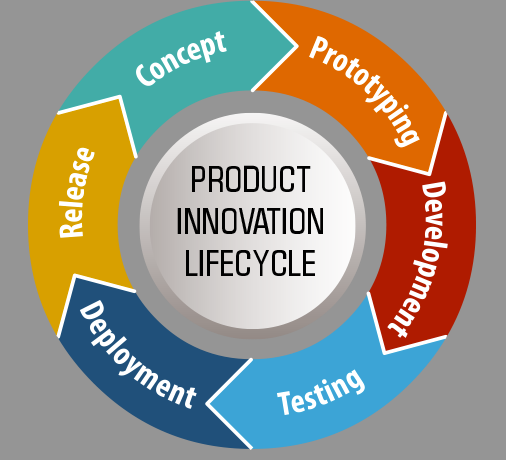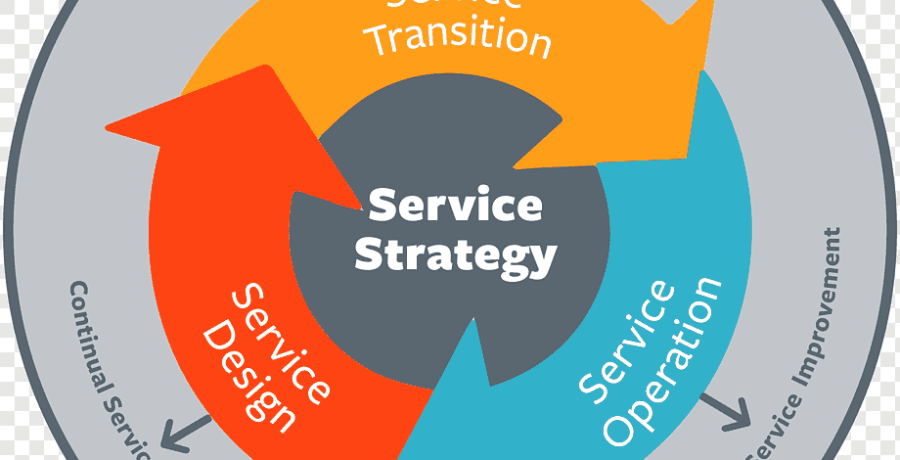Electronic life cycle management
Small, clever products. They light up, make noises, remember things, tell you where you are and connect you to the world. They are often made up of many different materials that have been refined and assembled into the components that form the product in your hand. Below, we have outlined the life cycle of an electronic/electric product. Starting at the design stage with an idea, we move through the stages of production, usage and recycling, hopefully ending up with recovered materials that can be reused to make new stuff. Each stage is explained in the caption below the picture.
Sustainable design
To be able to increase the rate and the efficiency of recycling, producers need to be mindful of the recycling phase pictured below when designing and producing a product. This is a relatively new approach, but there is potential for recycling a lot more material than we do today.
Manufacturing
The production phase of many electronics is the phase that is most harmful to the environment. Some of materials can only be found in a handful places on the planet, and sometimes in such low concentrations that we have to mine thousands of kilos of rock to get one single kilo of a certain chemical element.
Usage
Using a product for as long as possible is very wise. The longer a product’s life cycle, the less it burdens our environment. This is a general rule, but there are exceptions. One example is old, inefficient products (like old refrigerators) which consume so much energy that running them takes a bigger toll on the environment than producing them did.
Re-usage
Re-usage is about giving a product new life with someone else. Electric gadgets, for example, change owners via the Swedish websites Blocket and Tradera, but also on a small scale from El-Kretsen’s collection.
Transport
El-Kretsen collects large volumes, often from a few select places in each municipality. The actual recycling process takes place at different locations in Sweden depending on the product. Our role is to connect it all up, to know what’s going where and make sure things are transported to the right place. This can occasionally mean long transport distances, but from an environmental perspective it is still always worth it. The reason for this is in the recycling process.
Analysis
Approximately 2 per cent of all WEEE collected in Sweden is transported to our analysis facility in Arboga. We identify what products we collect, how old they are and what they contain. This provides us with valuable recycling statistics.
Recycling
We know that the production phase of many appliances is the phase that is most harmful to the environment. We also know that pure metals can be used indefinitely without losing their quality. Plastics also have recycling potential. Naturally, the recovery process also requires energy, but nowhere near as much as mining virgin metals from the crust of the earth. The greatest positive effect of recycling is a reduction of all the negative aspects of mining and oil drilling. Today, we recycle around 80 per cent of all the waste we handle. This is good, but it needs to get even better.
Material Replacement
Some waste that cannot be recycled or recovered can be used instead of other materials, for example to cover landfills or as fill material in road construction.
Energy
Waste that is not recycled for materials is treated as a combustible fraction and largely used to produce district heating. Sweden needs a lot of heating and today there is a shortage of combustibles. This is basically positive as it signals a high recycling rate. To deal with this shortage, many municipalities import waste. Using waste as fuel is efficient, as long as the recyclable materials have already been recovered and there are few remaining pollutants.
Landfill
One waste management method we strive to avoid is using waste in landfills. Some substances (like mercury) have to be disposed of as landfill as they are required by law to be withdrawn from circulation. Stone and concrete, which can be used as weights in white goods, are other materials that may be disposed of as landfill.


